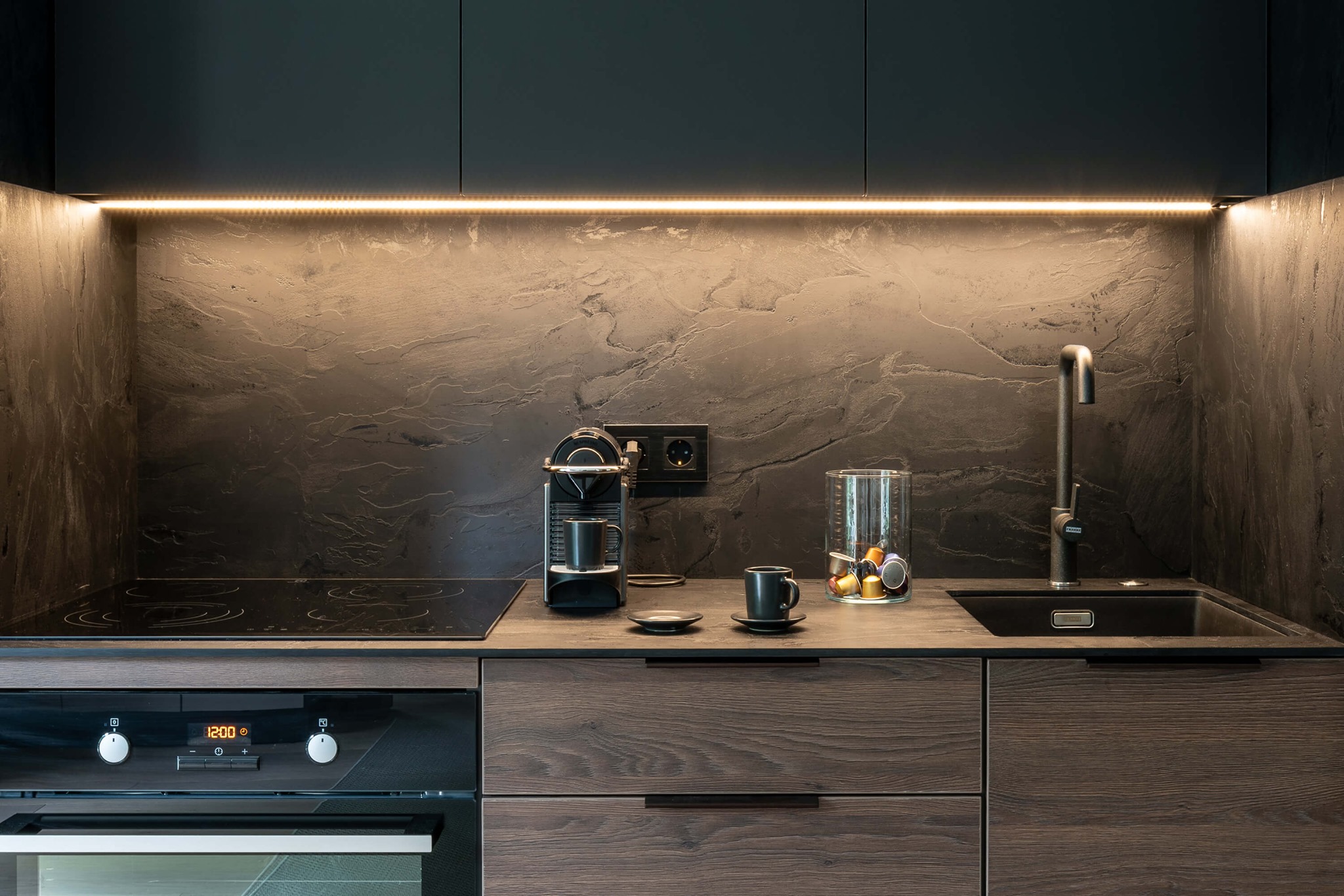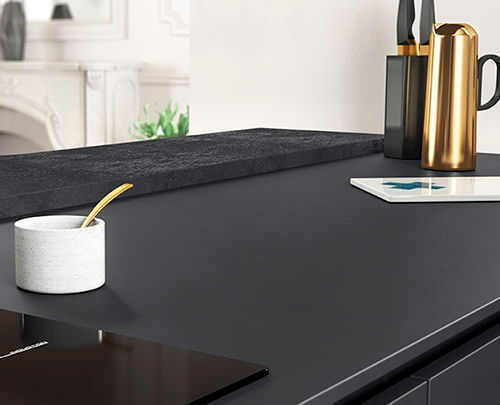High-Pressure Laminate (HPL) countertops have carved out a dominant space in both residential and commercial interior design, and the phenolic variant of HPL is taking performance and durability to an entirely new level. Whether you're outfitting a kitchen, upgrading office furniture, or setting up a science lab, phenolic HPL countertops deliver a tough, attractive, and long-lasting solution.
In this guide, we’ll explore what makes phenolic HPL countertops a preferred choice, their unique features, design options, advantages, applications, and how to select the right thickness for your project.

What is a Phenolic HPL Countertop?
Phenolic HPL countertops are a premium-grade variation of traditional high-pressure laminate. They are constructed using layers of kraft paper impregnated with phenolic resin and topped with a decorative melamine layer. These layers are fused under high pressure and temperature, resulting in a solid, compact, and ultra-durable countertop material.
Unlike traditional HPL—which is usually applied as a surface layer over a core board—phenolic resin countertops are self-supporting, eliminating the need for a separate substrate. This gives them greater structural strength and moisture resistance.
Key Features of Phenolic HPL Countertops
Phenolic countertops are known for their:
Exceptional durability: Engineered to withstand heavy wear and tear.
Water and chemical resistance: Ideal for wet or chemically-intensive environments.
Heat resistance: Can handle hot pans, lab instruments, or equipment without warping.
Non-porous surface: Prevents bacteria buildup and makes cleaning easy.
Design flexibility: Available in a wide variety of colors, textures, and finishes.
Compared to low-pressure laminates, which are typically made from a single wear layer over a decorative sheet with a lifespan of 1–5 years, phenolic HPL countertops can last up to 15 years or more with proper care.
Surface Textures and Finishes
One of the reasons HPL countertops are favored in both homes and offices is the availability of surface textures. Common finishes include:
Matte Finish: Popular for its subtle, polished look with minimal light reflection.
Crystal Finish: Reduces surface contact, making fingerprints less visible.
Beaded Finish: Feels like coarse-grained sand, offering a tactile, slip-resistant surface.
These textures provide not only aesthetic value but also practical benefits like improved hygiene and ease of cleaning.
Popular Styles of Compact Laminate Worktops
Phenolic and compact laminate countertops come in styles tailored for two primary applications:
1. General-Purpose (Horizontal and Vertical Surfaces)
Used in areas that require daily use and contact, such as:
Kitchen countertops
Office desks
Workbenches
Study tables
Common finishes in this category include granite, marble, stainless steel, and wood-grain designs that blend durability with appealing aesthetics.
2. Vertical Surface Applications
Used in areas with limited direct contact but high visual impact, such as:
Wall panels
Cabinet fronts
Decorative room dividers
These surfaces may feature stone, slate, or textured wood designs and are typically thinner and lighter than general-purpose countertops.

Advantages of Phenolic HPL Countertops
✅ Non-Toxic and Safe
Phenolic HPL countertops are manufactured from non-toxic materials and are food-safe. Their non-porous surface prevents bacteria, mold, and mildew growth, making them perfect for kitchens and healthcare settings.
✅ Stain and Fingerprint Resistance
Thanks to advanced finishes, most HPL worktops resist fingerprints and smudges, keeping them clean and presentable with minimal effort.
✅ Highly Customizable
Phenolic countertops can be tailored to fit specific dimensions and design preferences, from color and texture to thickness and edge treatment.
✅ Affordable and Scalable
Compared to stone or solid-surface countertops, phenolic HPL offers a cost-effective solution—especially when ordered in bulk for commercial use.
Potential Drawbacks to Consider
While phenolic countertops offer many benefits, they’re not without limitations:
Joint vulnerability: If the protective seal at joints or seams is compromised, moisture can penetrate, potentially causing delamination over time.
Edge chipping: Lower-quality installations may result in exposed or chipped edges if not properly sealed.
Proper installation and maintenance can mitigate these risks.
Applications of Phenolic Resin Countertops
Phenolic resin countertops are not limited to residential or commercial interior design. Due to their extreme resistance to heat, moisture, and chemicals, they’re widely used in:
Scientific laboratories
Water treatment facilities
Pharmaceutical manufacturing
Educational labs
Food preparation and cleanroom environments
These high-performance applications demand materials that meet rigorous safety and hygiene standards, making phenolic HPL the ideal solution.
How to Choose the Right Thickness for Your HPL Countertop
Thickness plays a major role in determining the durability and application of HPL countertops.
For horizontal surfaces (general-purpose use): A standard thickness of 1.25 inches provides sufficient strength and load-bearing capacity.
For vertical or decorative surfaces: A thinner profile ranging from 0.5 to 1 inch is usually adequate and more lightweight for easier installation.
Choosing the right thickness helps balance cost, performance, and aesthetics, ensuring your countertop serves its purpose without unnecessary bulk.
Conclusion: Why Phenolic HPL Countertops Are a Smart Choice
Whether you're renovating a kitchen, designing a workspace, or outfitting a high-tech lab, phenolic HPL countertops offer a winning combination of strength, versatility, and affordability. Their resistance to moisture, chemicals, and heat, along with a wide variety of design options, makes them suitable for almost any environment.
To make the most of your investment, always select products from reputable manufacturers, ensure proper installation, and choose the right thickness for your specific application. With the right approach, a phenolic HPL countertop can deliver lasting beauty and performance for years to come.
English
Русский
العربية
Français
Español
Português
Deutsch
italiano
日本語
한국어
Nederlands
Tiếng Việt
ไทย
Polski
Türkçe
አማርኛ
Bahasa Melayu
தமிழ்
Filipino
Bahasa Indonesia
magyar
Română
Монгол
қазақ
Српски
हिन्दी
فارسی
Kiswahili
Slovenčina
Slovenščina
Svenska
українська
Ελληνικά
Suomi
Հայերեն
עברית
اردو
Shqip
বাংলা
Hrvatski
Afrikaans
Māori
සිංහල
Oʻzbekcha
latviešu
Беларуская мова
Bosanski
Български
ქართული
Lietuvių
Malti
Runasimi




